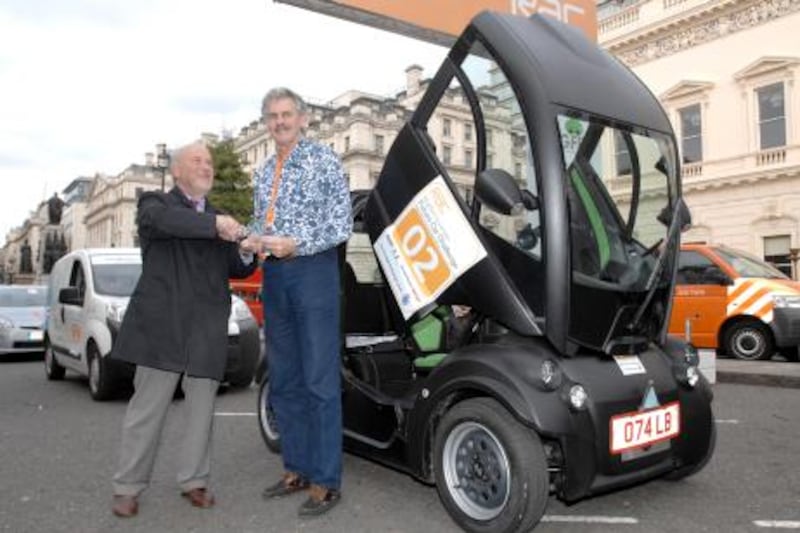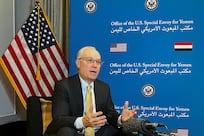Gordon Murray has an astonishing garage at his home in the heart of the English countryside.
Sitting side by side are a McLaren F1 and a Mercedes-Benz SLR McLaren - and the 65-year-old did not have to pay a penny for either of them.
These McLarens are two of the finest road cars ever built and Murray designed both of them. The pair he owns are the prototypes he was allowed to keep by his grateful employers.
The newest edition to his fleet of cars is the T25; the 25th car he has designed in an illustrious career dating to the late 1960s. It's a compact, lightweight city car, which he has claimed will revolutionise urban road transport in the 21st century.
The T25 has been driven quite a lot by its creator, most recently as part of a race from London to Brighton in which it achieved a fuel economy of 2.9L/100km. But more often it is the SLR or another of his cars, an eight-year-old Smart Roadster, that he drives to and from work each day. "I wouldn't say the SLR is quite an everyday car but I certainly like to drive it to work," he said.
"But for me, despite all those cars and my single-seater Rocket [a car he privately designed], it's the Smart car I'm most taken with.
"For one, it's a great-looking car. It has a power roof, heated seats and air con, and it all weighs just 830kg. In fact, it's got all you'd want from a car. It nips around corners and it's fun to drive."
Murray has been obsessed with cars for as long as he can remember. His father was a mechanic in post-Second World War South Africa at a time when there was little money to buy new cars.
"A lot of people wanted racing cars and the only way then, really, was to convert road cars," he said.
"So I remember weekends at home would either be spent working on cars in the garage or else going to motorcycle races or hillclimbs. It's just as well I loved cars from day one, as that's all we ever did."
Despite the love for tinkering with and repairing cars, Murray had no idea that he would work in the motoring industry.
He came to the UK jobless and unsure where his career would go but, in the space of a few months, had landed a job as a junior member of the Brabham workforce. Just four years later, he was appointed chief designer of the team by new owner Bernie Ecclestone, better known today as Formula One's commercial rights holder.
Looking back, Murray recalled: "I was exceptionally lucky as it was a case of being in the right place at the right time. My time at Brabham proved to be my happiest time in F1; it was the best time to be involved in the sport.
"Bernie just left me to my own devices and I was allowed to design the car I wanted. And I knew I was the chief designer as, when I turned around in the office, there wasn't another designer in there - it was just me!"
In the end, he designed one of the most controversial and loved cars in F1 history, the Brabham fan car, which was deemed illegal almost as soon as it first raced - and he also created the championship-winning BT39 and BT52.
By 1987, he was snapped up by McLaren, where he stayed until 2006 when he set up his own company, Gordon Murray Design, taking with him his entire McLaren workforce, which makes up the basis of the 22-strong team at the company's headquarters in Guildford.
Now his main focus is on the T25 and the electric version of the car, the T27, as well as the iStreaming process in creating them, which he has patented.The T25 dates to Murray being stuck in traffic in the UK in 1993 when he decided "this can't be sustainable". But while much of his time is spent on the T25, he considers himself a "car dreamer".
He plans to start work on a new luxury sports car in the next 18 months and is in partnership with Shell on a new, more efficient lubricant, as well as with Michelin over new tyres for his urban car.
And Murray readily admits he has no idea where his motoring mind will next take him.
"In my F1 days, it was an open book for innovative designs," he recalled. "I'd lie in the bath, come up with an idea at the weekend. I'd get the team to design it on the Monday, build it the next day, test it and, if it worked, we'd run it at the weekend.
"F1's not as exciting now as there are too many regulations, but I still like the 'anything goes' mentality in terms of car design and that eureka moment of coming up with something. That's still the great buzz for me."






